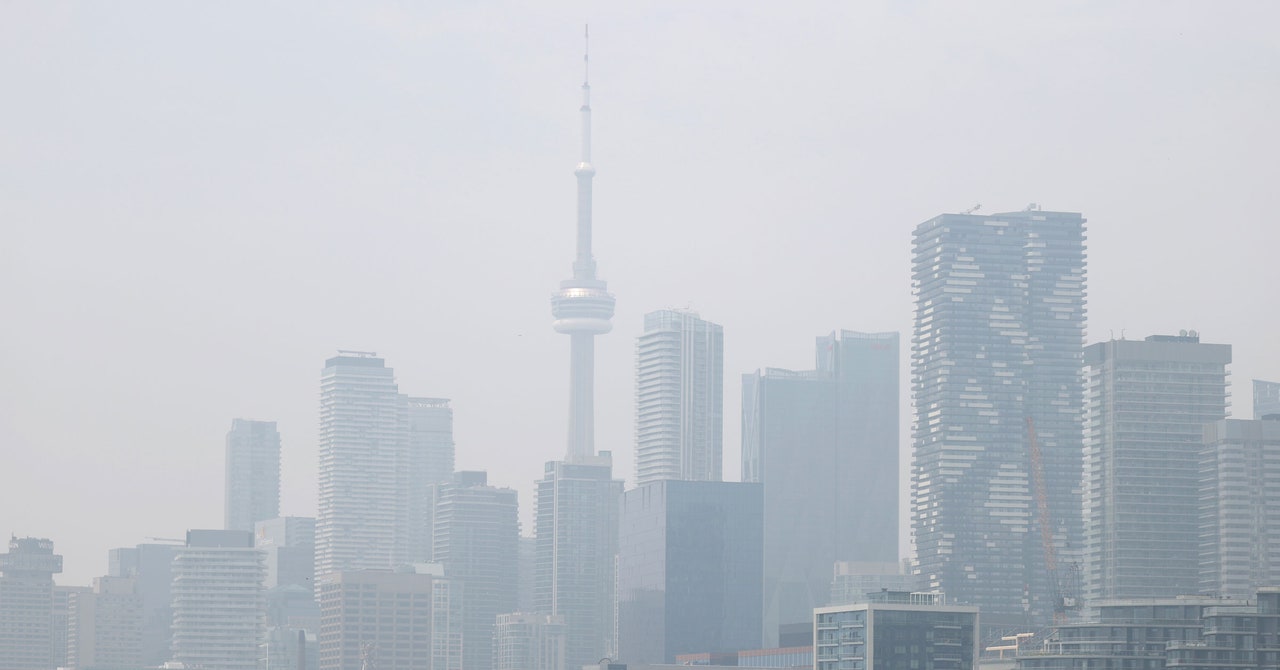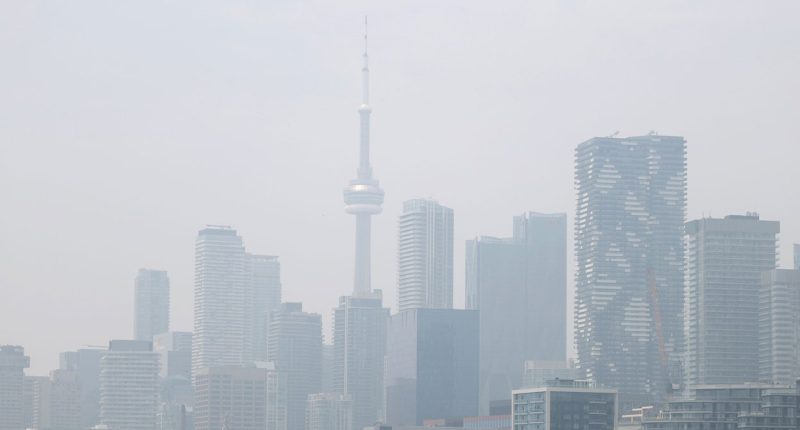.jpg)

“We’ve been kind of conditioned to going out in fresh air, but that’s dangerous now,” Knox says. “It’s a weird feeling.”
It’s relatively easy to check your community’s air quality. At least, if you live in the US, and also in an urban area that’s mandated to report such data to the Environmental Protection Agency. The Air Quality Index, or AQI, is the measure of potentially harmful particulate matter in the air around us. That includes everything from floating particles smaller than 10 micrometers (PM10) like dust and wildfire smoke to particles 2.5 micrometers (PM2.5) or smaller, like gas fumes. Official sources like the World Health Organization and the US-focused AirNow track air quality, usually more rigorously in populated areas, and rank the ratings on a scale from Good to Hazardous.
AQI readings have traditionally been taken by big, pricey measuring instruments owned and operated by state or local governments. But over roughly the past half decade, small, low-cost devices have democratized air quality monitoring. Companies like Purple Air and IQ Air have built up reliable air quality tracking networks made up by citizen-owned monitors; PurpleAir says it has more than 25,000 units in its network worldwide. These monitors are cheap devices that hook up to your Wi-Fi network and are easy to install. The sensors take regular air quality readings and then upload the data to the broader networks, offering a crowdsourced snapshot of air quality information that spans the globe. The devices aren’t perfect—there’s a greater chance of human error when the monitors aren’t placed by someone who’s trained to collect air quality readings—but the sheer scale of the network means inaccurate outliers have a higher chance of being drowned out by the sea of other nearby devices.
A platform like PurpleAir also makes the data immediately accessible by visualizing the air quality readings on a map, using a color-coded scale from blue and green (OK) to red and purple (very bad). Even if you don’t fully grasp particulate matter ratings, seeing a big red blob on a map over your house is a pretty quick way to tell something is off.
“It’s a form of engaged learning,” says William Mills, an exposure assessment researcher at Northern Illinois University. “You can touch it, you can feel it, you can see it. It’s community sharing that’s just easy for people to opt in to. You can gain as much or as little information as you want. Can we use that to look at other forms of environmental quality? Can we use it to help change behaviors?”
Making the data more accessible can make people more interested in paying attention to it, especially when disaster strikes. Elizabeth Spike is an alternative school teacher and the education program manager at Clean Air Partners, an advocacy group for air quality awareness based in Washington, DC.
“Between the wildfires and Covid, I think more and more people want to know what they are breathing,” Spike says. “It’s terrible that it takes these tragedies, these crises to make us realize we’ve been sleeping at the wheel. We have no choice but to breathe, and yet we really haven’t made a big deal about what we are breathing.”
Ammar Rai is a software engineer in Maryland. He’s had asthma since childhood, which was only exacerbated by a bout of Covid two years ago. When the wildfire smoke descended this summer, he wore a painters mask with built-in ventilators when going outside. Rai says he often feels like people with conditions like his are treated as a burden, until something like the summer’s wildfires brings widespread attention to air quality.
“People like me are like the canaries in the coal mines,” Rai says. “The stuff that we’re oftentimes reacting to is bad for you anyways. Somebody who may be perfectly fine and not show any apparent symptoms, they’re getting exposed to this stuff too. Then many years down the line, you find out they’re impacted by it, or it’s in their bloodstream, or they have some kind of lung disease.”







